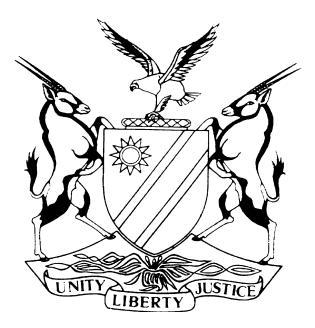REPUBLIC OF NAMIBIA


HIGH COURT OF NAMIBIA MAIN DIVISION, WINDHOEK
REVIEW JUDGMENT
PRACTICE DIRECTIVE 61
Case Title: The State v Mbambo Mpoko | Case No: CR 81/2023 | |
High Court Review No: 741/2023 | Division of Court: Main Division | |
Heard before: January J et Usiku | Delivered on: 21 July 2023 | |
Neutral citation: S v Mpoko (CR 81/2023) [2023] NAHCMD 427 (21 July 2023) | ||
The order: 1. The conviction and sentence in respect of count three are confirmed. 2. The convictions and sentences in respect of counts one and two are set aside. 3. The matter is remitted in terms of s 312 of the Criminal Procedure Act 51 of 1977 (CPA) for the accused to be properly questioned in terms of section 112 (1)(b) of the CPA in respect of counts one and two and for the court to satisfy itself that the accused admits all the elements of the offences, otherwise to enter a plea of not guilty in terms of s 113 of the CPA and bring the matter to it natural conclusion. 3. When sentencing the accused, the court should take into consideration the portion of the sentences the accused had already served or the fines paid. | ||
Reasons for order: | ||
JANUARY J (Usiku J concurring )
‘1. The Magistrate must explain if the accused was convicted for both reckless and negligent driving since he was convicted as charged. 2. Considering the case of S v Rumayi (CR 91/2021) [2021] NAHCMD 462 (6 October 2021), a review matter from the Rundu Magistrates Court, is the conviction justified?’
‘1. It was an error from the court’ side to convict the accused for both reckless and negligent driving. From the questioning in terms of s 112 (1) (b) the court was satisfied that the accused drove in a negligent manner. 2. I am guided by the case of S v Rumayi (CR 91/2021) [2021] NAHCMD 462 (6 October 2021) and S v Iita (CR 29/2021) [2021] NAHCMD 260 (27 May 2021) and I humbly concede that the conviction of Count 1 is not in accordance with justice, however I stand guided by the Honourable Review Judge.’
‘COUNT 1: PROCEED QUESTIONING ACCUSED IN TERMS OF SECTION 112 (1) (B) OF ACT 51 OF 1977 AS AMENDED. …Q: Do you have any lawful defense for your actions? A: Yes… COUNT 2: PROCEED QUESTIONING ACCUSED IN TERMS OF SECTION 112 (1) (B) OF ACT 51 OF 1977 AS AMENDED. …Q: Do you have any lawful defense for your action? A: Yes…’
1. The conviction and sentence in respect of count three is confirmed. 2. The convictions and sentences in respect of counts one and two are set aside. 3. The matter is remitted in terms of s 312 of the Criminal Procedure Act 51 of 1977 (CPA) for the accused to be properly questioned in terms of section 112 (1)(b) of the CPA in respect of counts one and two and for the court to satisfy itself that the accused admits all the elements of the offences, otherwise to enter a plea of not guilty in terms of s 113 of the CPA and bring the matter to it natural conclusion. 3. When sentencing the accused, the court should take into consideration the portion of the sentences the accused had already served or the fines paid. | ||
| ||
H C JANUARY JUDGE | USIKU J JUDGE | |
1 S v Shigwele (CR 75/2020) [2020] NAHCMD 453 (2 October 2020).
2 S v Rumayi (CR 91/2021) [2021] NAHCMD 462 (6 October 2021).
3 S v Joseph 1997 NR 108 (HC) 111C-D.
4 S v Augustu (CR 24/2021) [2021] NAHCMD 158 (15 April 2021).
Cited documents 4
Judgment 2
- S v Augustu (CRIMINAL 24 of 2021) [2021] NAHCMD 158 (15 April 2021)
- S v Iita (CRIMINAL 49 of 2021) [2021] NAHCMD 260 (27 May 2021)